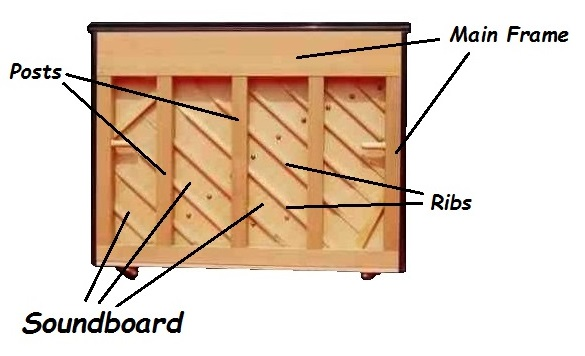The Soundboard
: The soundboard is a large board of
very resonant wood (usually spruce). It amplifies the volume of the vibrating
string in the piano. When the note is struck, the string vibrations travel to
the soundboard via the wooden bridge. The soundboard vibrates in sympathy with
the string, and is therefore responsible for the volume and the quality of tone
in the piano. Below is a diagram of a piano soundboard.

Notice that the soundboard is not flat; it has a very slight bend in it (the crown). The presence of a crown is a major factor in the volume and the tone of the soundboard (have you ever noticed that violins and guitars are not flat? The wood of the belly is slightly curved; more so on a violin).
A drop in humidity can cause shrinkage in the soundboard wood, thereby reducing the curve of the crown. This can deaden and reduce the tone. On the other hand, an increase in humidity will expand the soundboard wood, increasing the crown and increasing the tension on the strings - hence sending it out of tune.
Below: the soundboard
of an upright piano is clearly visible from behind. Note also the diagonal
strips of wood (the ribs), the main wooden framing, and the posts.




